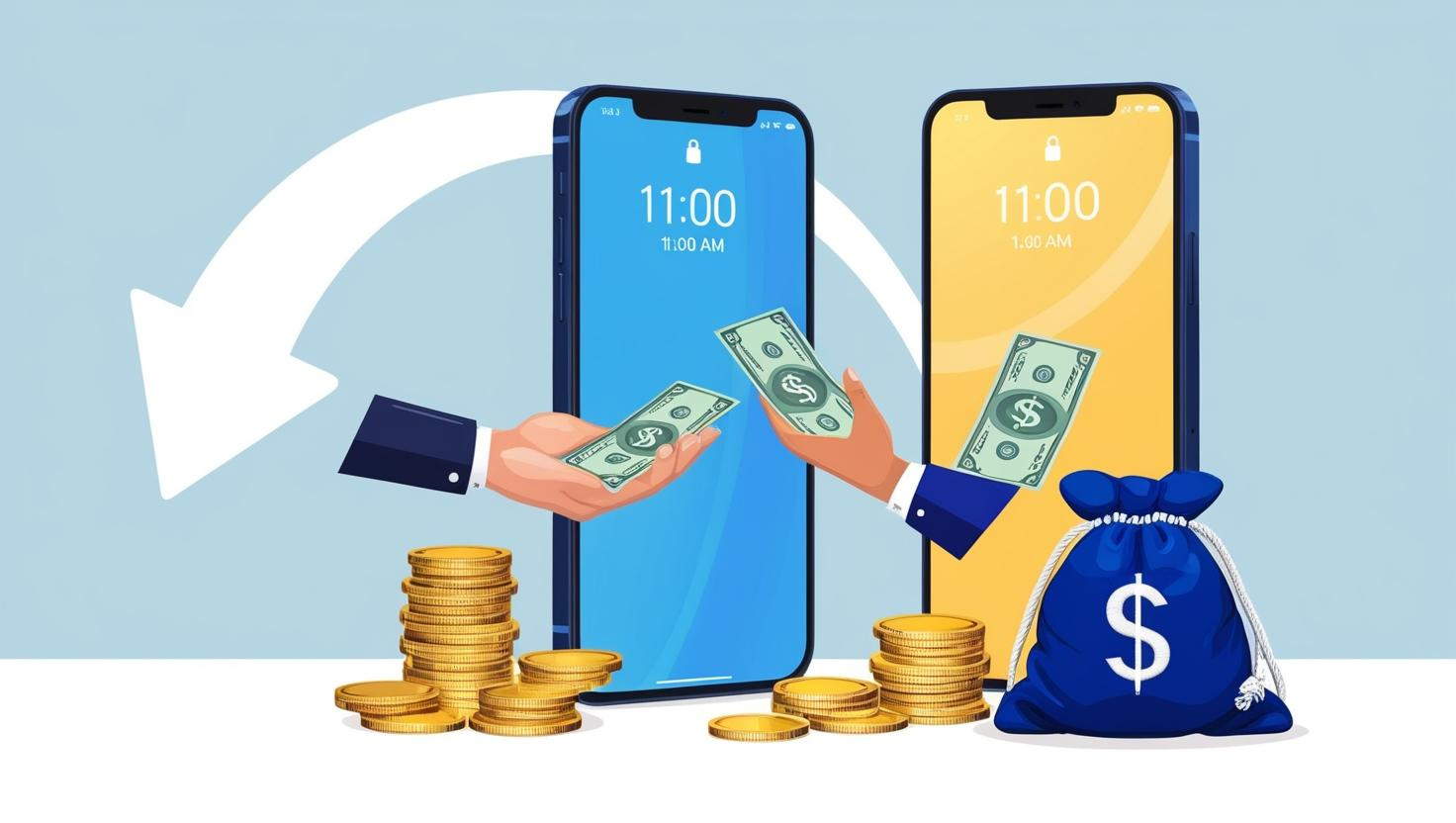Anúncios
Getting quick money can solve emergencies, consolidate debts, or finance plans, as long as it’s done cautiously.
With various fast-approval loan offers, clients experience unprecedented freedom and speed in the market.
We will analyze how these quick-approval loans work, their amounts, terms, and the necessary precautions to make informed decisions. We’ll cover verification and signing processes, the unique features of each offer, and tips to avoid surprises with rates and fees.
Boost Your Credit Score: Argentina Loan Guide
Loan Amounts and Release
° The term “fast-approval loans” refers to processes where financial institutions expedite the credit analysis, simplify documentation, and offer shorter response times, sometimes in a matter of hours.
° This speed is ideal for those needing immediate funds to cover urgent expenses, settle debts, or seize short-term business opportunities. The approval speed varies depending on the client’s profile (credit history, income, banking relationship) and the internal risk policies of the bank or fintech.
Released Amounts
° Generally, loan amounts can range from 10,000 to 200,000 pesos (or the equivalent in dollars, such as 200 to 3,000 USD, depending on the local exchange rate), but there are cases of offers above that.
° The exact amount depends on the applicant’s repayment capacity and monthly income. Banks like Santander or Galicia often pre-approve limits for clients who receive their salary through the bank. Loans of this type can range from 50,000 to 300,000 pesos, suitable for medium-sized needs.
Anúncios
Release Speed
° Some banks advertise “Money in your account in 24 hours,” which is possible if the applicant is already a customer with an established record.
°In fintechs, the promise may be similar—“Approval within 2 hours”—as the process is automated, using algorithms to assess risk.
° However, speed depends on the applicant submitting the correct documentation and not having significant issues in their credit history.
Repercussions
° While an immediate response helps in emergencies, it’s crucial to check the interest rate (which may be higher) and ensure that the monthly installment fits the budget, avoiding excessive debt or costly refinancing.
° In summary, fast-approval loans combine convenience and speed, but they require clients to have prior knowledge of the terms, the effective annual cost (CET), and potential fees. Below, we will walk through the step-by-step procedure to use these credit lines safely.
Procedures and Criteria
To clarify how the process of obtaining a quick-approval loan works, we’ve organized this guide into topics and subtopics that detail each phase: from criteria verification, online simulations, to signing and receiving the funds.
Criteria Verification
Income Compatibility
° Institutions set income commitment percentages. To ensure the installment doesn’t exceed 25% to 35% of your salary, some banks pre-define automatic limits for account holders.
° It’s important to check if your declared income matches the bank’s records (if you receive your salary there, even better).
Credit History
° Even for “fast-approval loans,” companies check databases like credit bureaus to assess any delays in other loans.
° In some cases, fintechs target clients with a modest credit score but offset this with higher interest rates.
Basic Documents
° DNI (ID), proof of address, and income are almost always required. Some banks may also ask for recent bank statements or pay slips.
° A benefit of being an account holder is that the bank already knows your financial movements, making the process simpler.
Online Simulation
Access to the Website or App
° Institutions typically offer simulators on their website or app, where you can input the desired amount, select the term, and see an estimated installment.
° The interest rate, effective annual cost (EAC), and any additional charges (such as insurance or fees) are displayed.
Adjusting Term and Amount
° Test terms ranging from 6 to 48 months (or up to 60 months, in some banks) to see how the installment changes.
° Check that the total amount at the end doesn’t exceed the requested capital too much (sometimes, the interest rate difference between 12 and 24 months can be significant).
Agreement with Risk Policies
° If the simulation suggests the loan doesn’t fit your profile, the system may recommend reducing the amount or extending the term to adjust the installment to your debt limit.
Submission and Signing
Filling Out the Form
Once the simulation is satisfactory, the next step is online registration or an in-person request. You’ll provide details such as full name, DNI, phone number, email, and confirm your income.
Document Scanning
In virtual systems, you simply upload photos or PDFs of pay slips, bank statements, etc. If it’s an in-person request, you need to bring originals and copies. For smaller loans, extensive documentation might not be required.
Digital Signature
An increasingly common practice, the digital signature process eliminates paperwork and speeds up the approval. The customer reviews the final conditions (amount, interest rate, number of installments) and confirms via token, email, or SMS validation.
Disbursement
Once the contract acceptance is complete, the institution transfers the funds to the applicant’s account. This can take anywhere from a few hours to two business days, depending on the bank’s policy.

Differentiators of Each Offer
Each bank or fintech adopts a unique approach to attract customers and simplify the application process. Here are some examples:
Santander: Immediate Disbursement
Santander stands out with its “immediate disbursement” feature, promising that funds will be transferred to the account within a few hours or on the same day, provided the customer’s registration is up to date.
Process: Customers with a salary account at Santander typically have a pre-approved limit visible in the app. Simply accept, and the money is transferred instantly.
Precautions: Despite the speed, it’s advisable to compare the interest rates with other institutions to avoid paying more than necessary.
Banco Galicia: Less Bureaucracy
Galicia often emphasizes minimal bureaucracy — fewer documents and simplified analyses, especially for customers who already receive their salary through the bank.
Process: Much of the application process is done through Internet Banking or the app, with a digital signature.
Result: Moderate speed but a higher chance of customizing the term and installment amount.
Digital Fintechs: “No Credit Check” and Higher Risk
Proposal: Some fintechs in Argentina offer loans “without credit checks” or with minimal requirements.
Advantage: They serve customers who have faced credit restrictions in traditional banks, providing a second chance.
Precautions: The interest rates may be higher to offset the institution’s risk. It’s essential to read the contract and verify the legitimacy of the fintech.
Rates and Charges
| Item | Explanation | Importance |
|---|---|---|
| Interest Rates | Annual or monthly percentage applied to the principal | Defines the basic cost of the loan; comparing is crucial |
| Total Effective Cost (CET) | Sum of interest + fees + insurance and charges | Indicates the actual cost; prevents surprises in the long run |
| Avoid Surprises | Read all clauses and highlight extra charges | Ensures clarity and prevents unexpected fees |
Comparison and Simulation
Before signing any contract, it is highly recommended to conduct simulations and comparisons between proposals from various banks or fintechs. Each institution sets its interest rate based on factors such as: credit history, monthly income, previous relationship, and the chosen term. If the client opts for a longer term, the installment will be smaller, but the total amount paid at the end tends to rise due to the accumulated interest over the months.
A typical simulation requires entering: the desired amount, number of installments, and approximate income. The system will then return estimates of the monthly rate, effective cost, and final amount. It is essential to observe not only the installment but also the CET, which includes administrative fees, mandatory insurance, and any additional charges. In some cases, a difference of 2 or 3 percentage points in interest can represent a considerable sum by the end of the payment.
Additionally, analyzing whether the bank has promotions or discounts for account holders, or if the fintech offers a “first loan with no interest” (within smaller limits), may be worthwhile to take advantage of special conditions. Finally, if doubts persist, speaking with a specialist or a bank advisor helps to decipher contract terms and avoid pitfalls—ensuring a more informed and financially healthy choice.
Possibility of Limit Increase or Refinancing
A point that attracts many people interested in quick loans is the future flexibility to increase the limit or refinance the balance. This can occur when, for example, the client has regularly paid several installments and improved their income or credit history, resulting in a more favorable risk assessment by the bank. In this situation, the institution may offer an additional amount of capital, releasing extra funds without closing the current contract, or it may propose that the client refinance the remaining balance to have more manageable installments.
Thus, if income increases or new needs arise, there is no need to open another parallel loan, which would incur additional costs. Instead, refinancing consolidates the remaining debt and the additional amount, adjusting the installment or term. This practice is beneficial for cases with unforeseen cash flow issues or projects that require more resources than initially planned. However, it is advisable to assess whether the interest rate remains competitive and if, in the end, the cost does not become too high. An updated simulation, considering the CET of the new agreement, is recommended to avoid excessive debt.
Finalizing the Request
Data Confirmation, Possibility of Support
After the approval phase and defining the amount, the final step consists of confirming that all provided information is correct and that the client has read the contract in full. This moment includes:
Signing and Completion
Whether online (via digital signature) or in person, the borrower must review each clause regarding interest rates, terms, and any associated insurance. It is essential to verify that the monthly installment is the same as the one simulated and that the due date aligns with your financial calendar.
Direct or Digital Contact
For online loans, everything can happen without physical contact, but many institutions maintain call centers and chats to clarify any last-minute doubts if something in the contract is unclear. If preferred, the client can schedule an appointment with branch managers, especially for higher amounts, ensuring additional guidance.
Receiving the Funds
Once the signature is finalized, the release of funds usually occurs through a deposit into the applicant’s bank account, as provided during registration. At this point, it’s important to monitor if the amount is deposited within the promised timeframe (24h, 48h, etc.) and report any inconsistencies to the customer service department.
Once this is done, the loan is officially contracted. At this stage, it is best to organize your finances to honor the installments, avoid delays, and, if desired, periodically check the possibility of making early repayments or renegotiations if economic conditions change.
Final Summary
• Speed of Release: Certain banks and fintechs promise funds in the account within up to 24 hours.
• Flexibility of Terms: The client adjusts the number of installments according to their income and payment capacity.
•Simplified Process: Reduced documentation, especially if already a customer; digital processes speed up approval.
• Possibility to Refinance: If a greater need for credit arises or there’s a desire to extend the term, renegotiation is possible in many cases.
• Transparency in Effective Cost: Leading institutions clearly disclose the CET, interest rates, and charges.
• Variety of Options: Santander, Galicia, and fintechs offer customized solutions for each profile (salaried employees, freelancers, retirees).
• Less Bureaucracy: Compared to traditional lines, there are fewer forms and steps, especially for medium and smaller amounts.
• Ability to Compare: Through simulators, you can evaluate which bank, interest rate, and installment work best with your budget.



